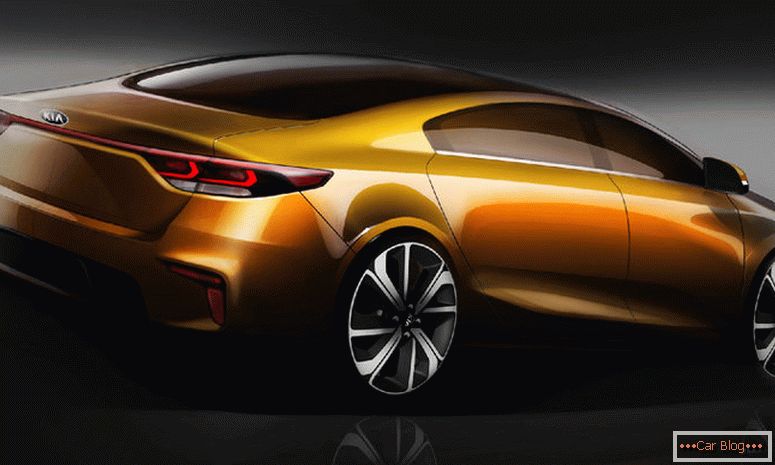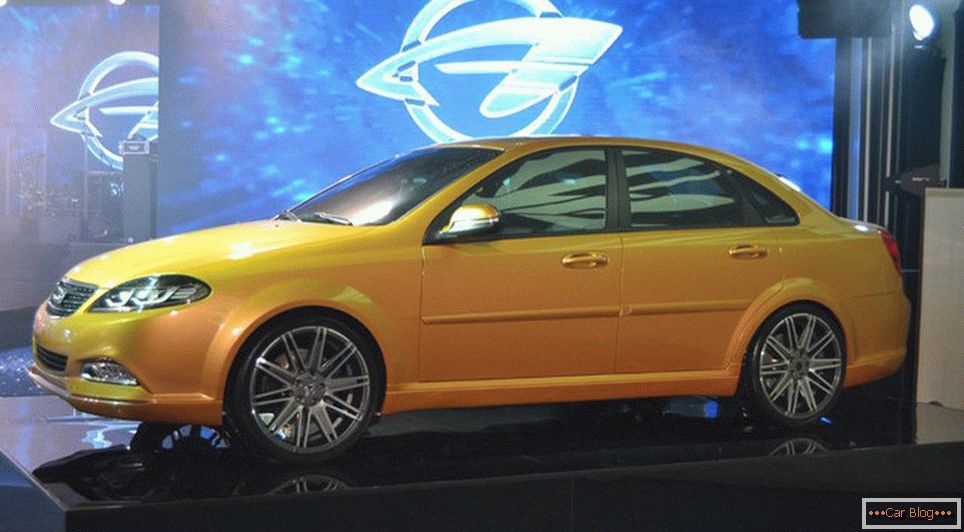In vehicles, batteries act as a starter power supplier. If the battery is empty, it can adversely affect the operation of the entire vehicle system. It is necessary to prevent the discharge and periodically charge the battery. When the owner does not have a charger, the question is how to charge the car battery without a charger? The case is serious and requires careful and precise adherence to the recommendations.

Battery installed in the car
Content
- 1 Battery Purpose
- 2 How can I charge a dead battery?
- 3 We charge without a charger - diagnostics
- 4 Charging car battery in the cold
- 5 Charging methods without a charger
- 6 We charge the battery at home without a charger
Battery Purpose
The battery serves as support both to the starter and to the other transport mechanisms. His work is observed during cranking the engine crankshaft. When in the process there are several idle starts in a row, the entire battery charge is emptied. In addition, the battery acts as an additional power reserve in cases where the generator can not give the right amount of energy to all consumers of the onboard network. The scheme of the battery circuit drawn up by the manufacturers easily serves all parts of the vehicle system, but there are cases when the required amount of electricity is not enough even for nominal values.
In emergency situations, the battery plays the role of an emergency power supply.. Everything happens when the generator or the relay-regulator knocks out, a similar situation can be observed when the alternator drive belt is broken. If the problem has arisen outside the city limits, then the battery will help to get out of the situation. In addition, the important purpose of the battery is stabilization of voltage drops. Jumps appear when the electrical grid closes or vice versa.. The impulsive state certainly affects the performance of semiconductor parts, in order to avoid rapid wear many drivers extinguish pulses with a battery.
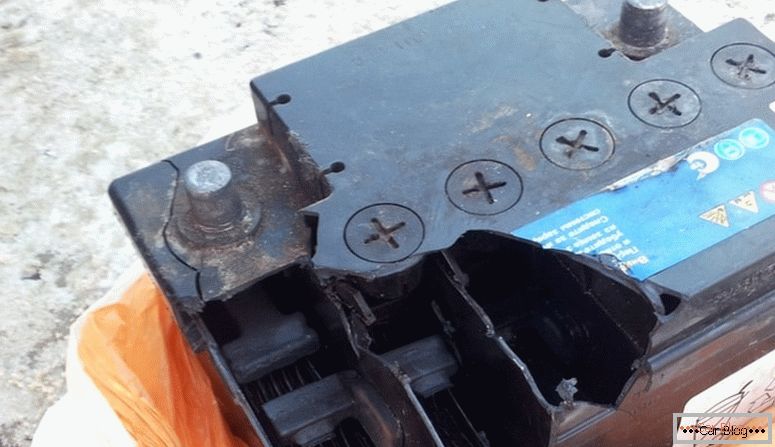
Pretty battered battery
How can I charge a dead battery?
Now, let's figure out how to charge the battery without a charger? To charge one vehicle system is difficult and unsafe. Theoretically, this can be done if you change the work of the relay-regulator by raising the voltage level. Before analyzing the following methods of charging a battery without a charger, it is worth remembering that any unauthorized interference with the auto mechanism may lead to unpleasant consequences. When you see that the battery requires recharging, then:
- Try to turn off all unnecessary energy consumers.
- Continue driving at the desired speed, but with reduced transmission. This will create more fuel consumption, but the intensity of the generator current increases. This option is allowed to use as a short-term phenomenon.
If there is no power leak in the on-board network, then recommendations will give a noticeable effect. When the ability to diagnose is not anticipated, then before using the tips, check the tension of the alternator drive belt and the lack of slippage on the pulley. Another situation, if your car was parked in the parking lot or in the garage for a long time, and when you started to start it, it was not a success. It is likely that in the cold the battery lost its charge. If the car is constantly in operation, but after a night break the charge is exhausted, then the reason lies in the leakage of energy from the electrical circuit.
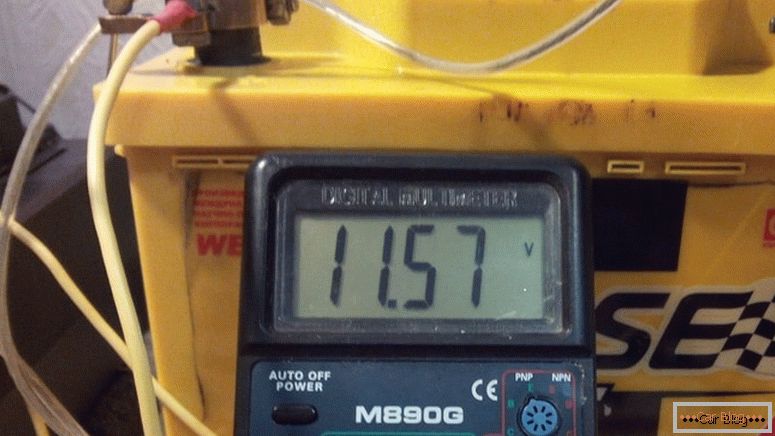
Battery voltage measurement in case of breakdown
We charge without a charger - diagnostics
Before charging the car battery without a charger, you should do a small inspection of the car. This will help confirm the cause of the exhausted battery. Begin testing with the dashboard sensors. If you see a faint light, then the battery is almost sat. The sound of the engine plant is also changing. He will be slow and protracted. In addition, from the hood will hear the characteristic clicks. Those who have a voltmeter on the dashboard will easily determine when to start putting the battery on charge. In addition, today most of the batteries contain built-in indicators showing the charge of the device.
See also: Which spark plugs are better to chooseCharging car battery in the cold
When the battery has lost its charge in the cold, it is possible to return its working capacity without the butt of the apparatus. Take the battery out of the car and move it to a warm place to warm up. Do it carefully and do not be fooled by extreme measures like boiling hot water. It is not safe and can be reflected in unforeseen costs. Another simple option is shaking the device, so that the liquid in the battery is distributed evenly. Maneuver carefully and do not try to look inside.
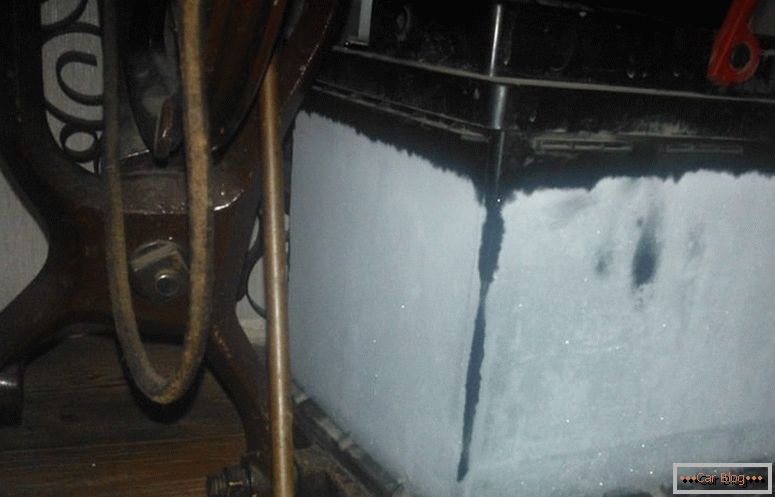
That's what happens with the battery in the cold
Charging methods without a charger
We light the car. All motorists know that you can charge the battery from another battery. This is a proven and reliable way that effortlessly breathes life into an empty battery. It requires the presence of several wires, while the cross-sectional area of each of them is 10 mm2. Use thin and damaged wires are not worth it, because they will burn. Use only rubber-coated wire. In frosty weather, plastic will not stand. The length of the conductor should be more than a meter.
Take wires with a permissible amperage of 200 amperes and more, because the increase in power gives a good result. Fastenings of wires should be well soldered, and clamps wide. So you will increase the contact area and easily fasten the conductor. In addition, it is important to know the condition of the engine of the donor’s car If you find electrolyte leakage during the checkout, you will not be able to charge the battery from this vehicle. Do not waste time and risk another car crash. Please note that the battery should be charged strictly according to the type of battery. It is forbidden to light a 12 volt device with a 24 volt battery..
Interestingly, the circuit does not work in the opposite sequence. If the driver has a low-voltage 24-volt battery, then it can be charged using a chain of two 12-volt batteries connected in series. It is necessary to monitor the polarity during the connection and see that the wires are not strained.
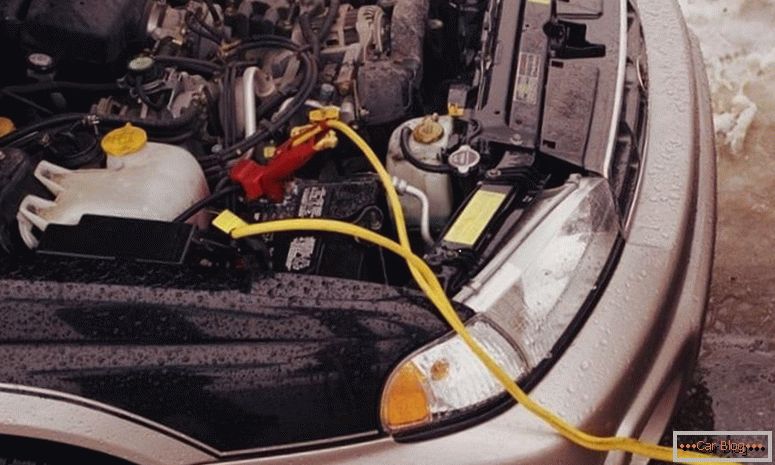
Correctly "lit" cars
Based on the standard markup, it is clear that red wire color is plus, black is minus. To start producing a charge, shut down the donor machine, then begin to connect the wires. Start with the minus donor connection and finish with the minus of your car. When a spark occurs when the last terminal is connected, this is normal. It must be connected to the mass of the metal part that interacts with the body. After all the terminals are in place, start the donor car for a couple of minutes. At the end of two minutes - envy another car. It needs to work for five minutes. Disconnect all wires, but do not turn off the engine, let it recharge the battery for another half an hour. Do not turn on additional energy users while the car is running. - audio and light, etc. After the battery picks up the charge and starts the engine, at home you should normally charge the battery charger.
Start with a tug. It is notable for motorists with MKPP. It requires the battery to have a bit of charge. In theory, it should be enough to run, because the whole method is based on the awakening of the generator. To another car sticking towing cable. When the transport gets the desired speed, you need to turn on the ignition and stick the front gear. This method can be applied without a second machine. If you have assistants, you just need to push the car. When the engine starts, you do not need to turn it off, otherwise you will have to push again. Better make a couple of races on the highway - it will return the battery to its normal state.

Starting the battery with a jolt
We charge the battery at home without a charger
When the battery is discharged, and there is no possibility to charge with a charger, we use alternatives from improvised means:
See also: How to repair the rear window of the carOption one. We take out the battery and take charge from the laptop. We do not connect directly, since the protection circuit will work. To reduce the power supply, we insert two lamps in parallel in the circuit from the car. The battery should charge about six hours after the voltage on the stamps will reach 14 volts should not be charged. It is easy to calculate whether the charger has enough power: the current in the circuit is multiplied by the voltage of the unit. For example, 20 Volts * 4.5 Amps = 90 Watts. When the power consumption is greatly overestimated, the current in the circuit should be reduced by disconnecting one lamp.
Option Two. We make a circuit of a light bulb, a diode and a battery. To work we take a lamp with nichrome filament with power from 60 to 200 watts. Lamp power only affects the speed of the charge. The diode can be taken both imported and domestic. It is required to convert AC voltage to DC. See that the diode was of normal size, this first of all speaks of its power. The work does not need high power, but it is better to have a reserve. Diodes from receivers and power supplies go great.. Next, the wires with terminals and plug included in the outlet.
Remember that all work is done at high voltage at your own risk. You can only touch the circuit elements when it is disconnected from the network. Wires must be insulated and not have exposed ends. When setting up the circuit, it’s worth taking into account that the lamp acts as an indicator. It should burn in half heat, this suggests that the diode cuts off only one part of the amplitude of the alternating current. When there is no light in the lamp, it means that the circuit is not built correctly. Do not take the lamp above 200 watts, as the semiconductor or the battery itself will burn from it. The best battery variant is 1/10 of the capacity, i.e. 75Ah is charged with 7.5A current, or 90 A.h. with 9 ampere current. Charging time runs from 6 to 8 hours.
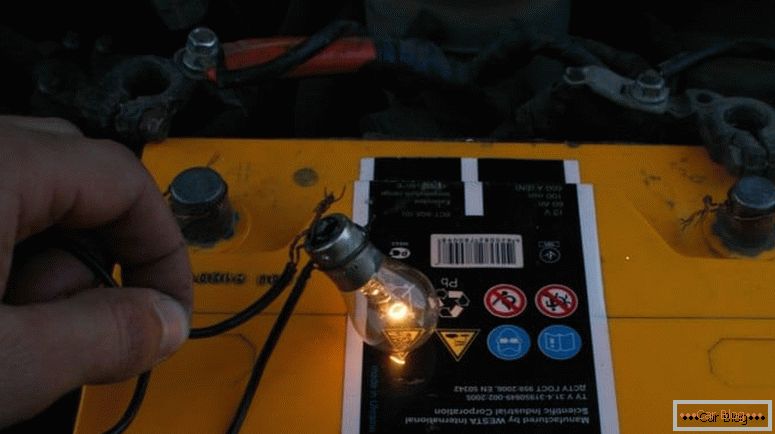
With the help of a lamp battery charge is checked
When assembling the circuit, very important to consider semiconductor polarity, if the diode gives electricity in one direction, then the arrow on the markup looks at the plus. Current manufacturers are moving away from the standards, so of course it is better not to guess, but to read the documentation for the selected diode. To recognize the polarity at the terminals of the battery take a tester. In dc mode, upon successful connection, the tester outputs + 99 volts. When connected incorrectly - 99 volts. Note that you do not need to charge more than 10 hours - the battery will boil. Before removing the battery, turn off the circuit from the outlet.
Finally, we note that every time you do not need to experiment with the battery charge, you need to purchase an instrument to check the battery charge. The device will allow time to see a decrease in battery charge and prevent its full planting.

